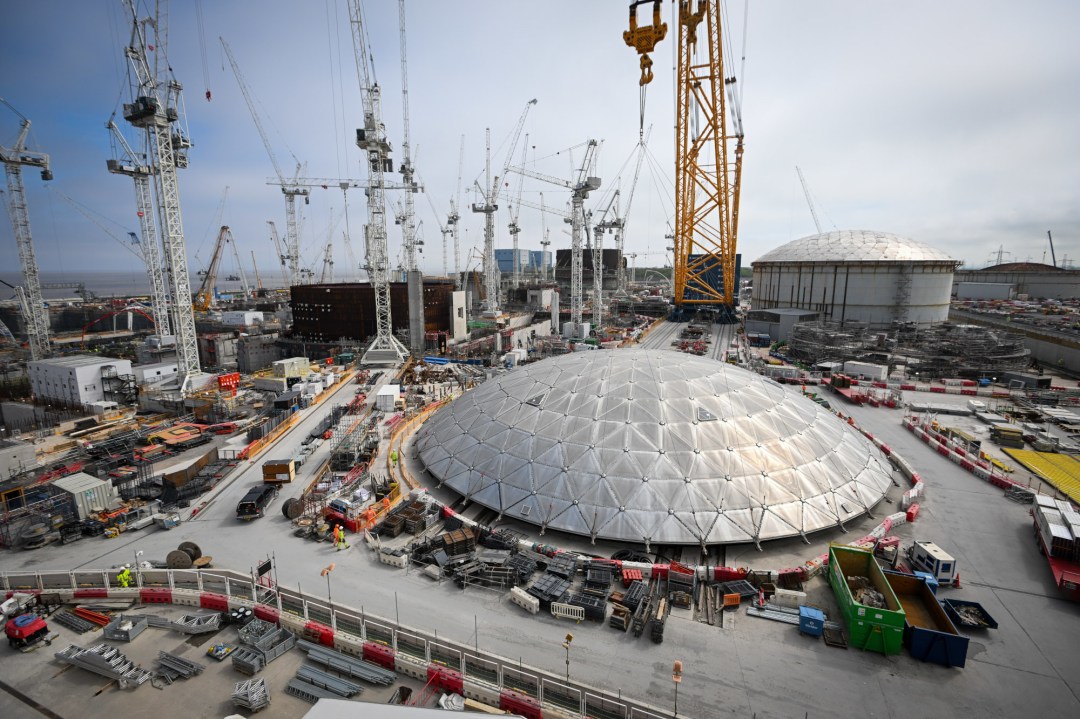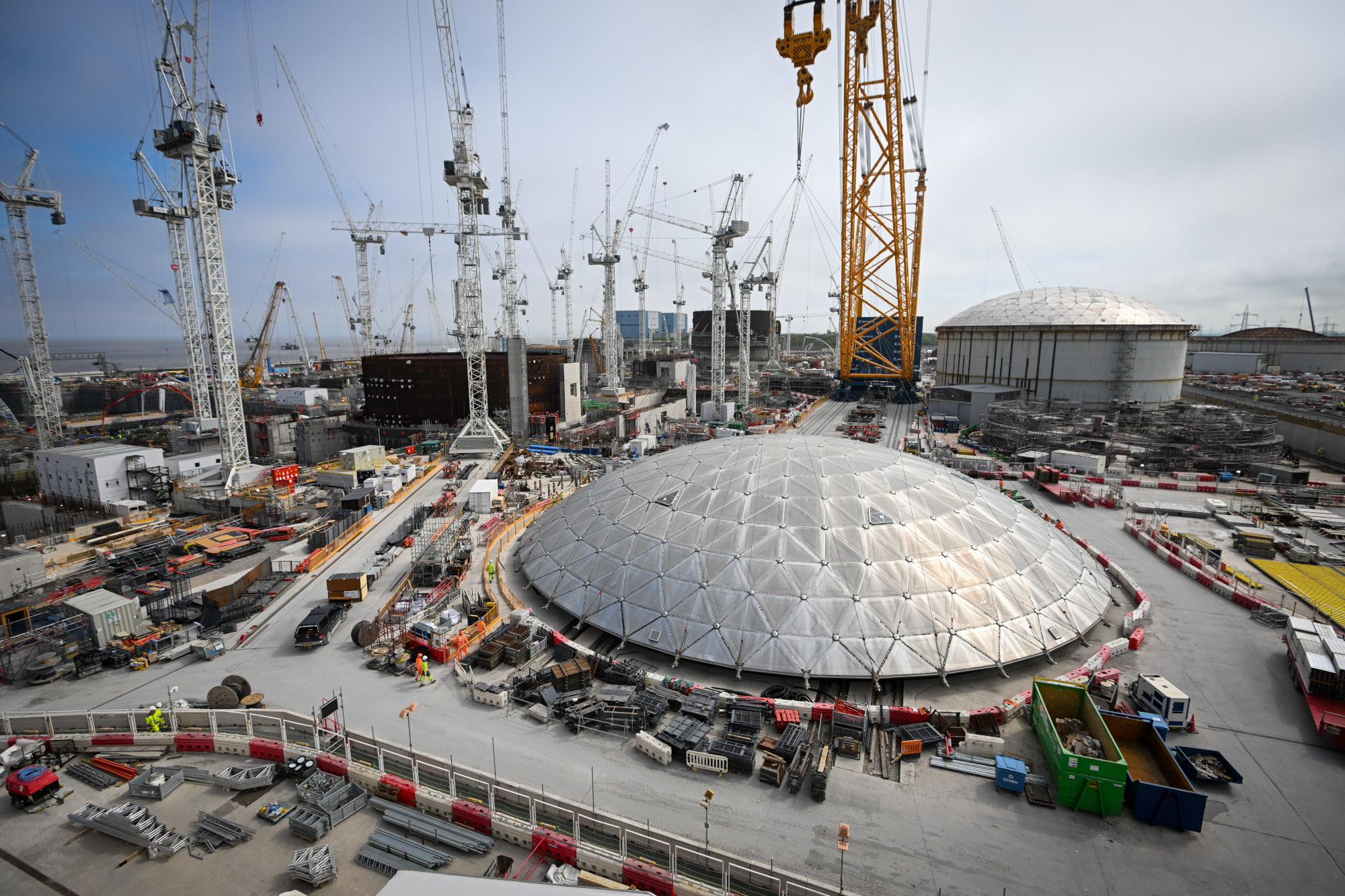As late as 1965, Britain had more operational nuclear reactors than the rest of the world combined. Yet, Britain hasn’t built a new nuclear reactor in almost 30 years. France and South Korea now standout as the world leaders in building nuclear power stations. Indeed, when the wind isn’t blowing and the sun isn’t shining, we rely on France to send us some of their excess nuclear power to keep the lights on.
Nuclear power is vital for our energy security. It runs whatever the weather. It makes us less reliant on the volatile gas market. It’s clean too – producing power without CO2 emissions. And unlike renewables, nuclear has a very small land footprint. To produce the same amount of power over a year as Hinkley Point C, you would need a solar farm twice the size of Oxford.
The case for investing in new nuclear power plants like Sizewell C – as Keir Starmer is reportedly now poised to do – is strong, but there’s been one big hurdle: cost. Money is tight in Whitehall and a new nuclear plant will have big implications for the government’s balance sheet.
Hinkley Point C, the nuclear plant that we currently are building, has become a by-word for everything that is wrong with British infrastructure delivery. Pound for megawatt, it is the most expensive nuclear power station ever to be constructed. Its final price tag is likely to be £42 billion (inflation adjusted). That’s 80 per cent more than it cost France to build Flamanville 3, a nuclear plant built using the same fundamental design. South Korea can build for even less – in fact, the Shin Wolsong plant in South Korea was built at one-sixth the cost of Hinkley Point C per MW.
Why are British nuclear plants so expensive? Part of the reason is dither and delay. South Korea doesn’t engage in lengthy debates over whether or not they should fund a single reactor. They buy fleets of ten or more. France’s Nuclear Policy Council recently set out plans to loan EDF the money to build six EPR-2 reactors. Sizewell C was granted planning permission in July 2022. We are still waiting for the cash to be signed off.
One way to make things cheaper is by doing them again and again. There are few things harder than building a new reactor from scratch. Nuclear industry bods talk about the First-of-a-kind (FOAK) problem. The first attempt will inevitably go wrong in about 1,000 different ways. FOAK-ups are common. A nuclear plant recently built in Georgia was forced to spend $1 billion more than planned because of incorrectly installed steel rebar.
Practice makes perfect. The more we build the cheaper things get. And that’s the idea behind Small Modular Reactors (SMRs): Ikea-style nuclear plants where each part is built in a factory and then assembled on site. SMRs lend themselves to a South Korea-esque fleet approach.
Yet, the UK’s approach to backing SMRs leaves a lot to be desired. The Great British Nuclear competition has been slow and bureaucratic. If as many suspect, it was a process designed to rubber stamp Rolls-Royce SMR’s design, then it has been a very expensive way to do it.
Some in the nuclear industry act as if nuclear’s cost issues are simply the result of governments being too timid to open the chequebook. Yet the nuclear industry has experienced what’s known as negative learning. The more nuclear plants we build worldwide, the more expensive nuclear seems to get. The cheapest nuclear plants built today would still have been unacceptably pricey in the 60s and 70s – back when nuclear could compete with coal on cost.
The deeper problem is a regulatory culture where nuclear energy can never be safe enough. Nuclear regulation is governed by a principle known as ALARP – as low as reasonably practicable. What this means in practice is that almost every safety upgrade imaginable is required even if, under a best case scenario, they only reduce radiation exposure by a tiny amount (for example, the radiation difference between spending your summer in Cornwall instead of London). In fact, a regulatory requirement can only be blocked if the costs outweigh the benefits by a factor of ten. And the burden is on the reactor designer to persuade the regulator that the costs outweigh the benefits by that much. The result is few companies ever bother to challenge the regulator and we end up with over-engineered nuclear plants that are so safe no one can afford to build them.
This all might change. The PM’s appointed former competition enforcer John Fingleton to lead a review of nuclear regulation. He may have the most important job in Britain. Get it right and tech companies are ready to invest billions in British reactors to power their data centres. Get it wrong and Britain will be stuck with the highest industrial power costs in the world.








Comments